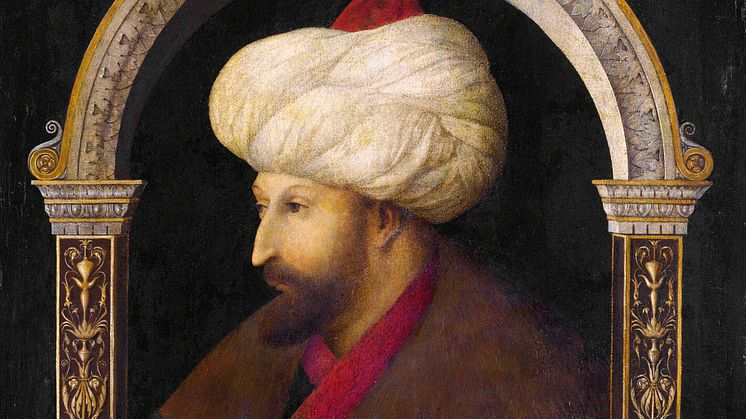
Press release -
This year’s Tessin Lecture: Seeing the Sultan with Victor I. Stoichita
Wednesday 11 October it is time for the Tessin Lecture 2023. This year it is given by the renown Romanian-Spanish art historian Victor I. Stoichita. The lecture will focus on Italian School of Venice-artist Gentile Bellini’s paintings from his visit to Istanbul circa 1480, especially his portrait of Sultan Mehmet II.
Once a year the Nationalmuseum, Stockholm invites a prominent international scholar to give a lecture in art history. The lecture, which is public, is a way to pay tribute to an exceptional scholar in art history and emphasize the museum’s commitment to research. This year it is given by the Romanian-Spanish art historian Victor I. Stoichita.
Date:Wednesday 11 October 17:30–18:30
Venue:The South Courtyard, Nationalmuseum
Language:English
Free admission, no pre-bookings
Gentile Bellini (Venice 1429–1507) stayed in Istanbul for just over a year (until the end of 1480, or the beginning of 1481), during which time, if the sources are to be believed, the favours bestowed upon him by the sultan were prodigious. A number of sketches reveal him to have paid a great deal of attention to all the new sights he discovered in the city’s streets, and sources mention several commissions emanating from the seraglio. But the most important result of this visit was his portrait of the sultan, which now hangs in the National Gallery in London. It is an exceptional example of cultural hybridisation, and it is in this light that it should be approached and analysed.
Victor I. Stoichita (born in Bucharest in 1949) is Emeritus at the University of Fribourg (Switzerland). He was awarded the Louvre Chair in 2014, the Bernard Berenson Lectures at Harvard University's Centre for Renaissance Studies (I Tatti) in 2016, the European Chair at the College de France in 2018 and the Hegel Lecture at the Freie Universität in Berlin 2022. In 2020 he was awarded the scientific prize of the Aby Warburg Foundation in Hamburg and the Martin Warnke Medal. He is the author of several works on the history of art, translated throughout the world, and of an autobiographical novel which was awarded the Prix de l'Académie Française in 2015.
Media enquiries
Hanna Tottmar, head of press, press@nationalmuseum.se, +46 8 5195 4400
Nationalmuseum is Sweden’s museum of art and design. The collections comprise some 700 000 objects, including paintings, sculpture, drawings and graphic art from the 16th century up to the beginning of the 20th century and the collection of applied art and design up to the present day. Nationalmuseum is a government authority with a mandate to preserve cultural heritage and promote art, interest in art and knowledge of art.

